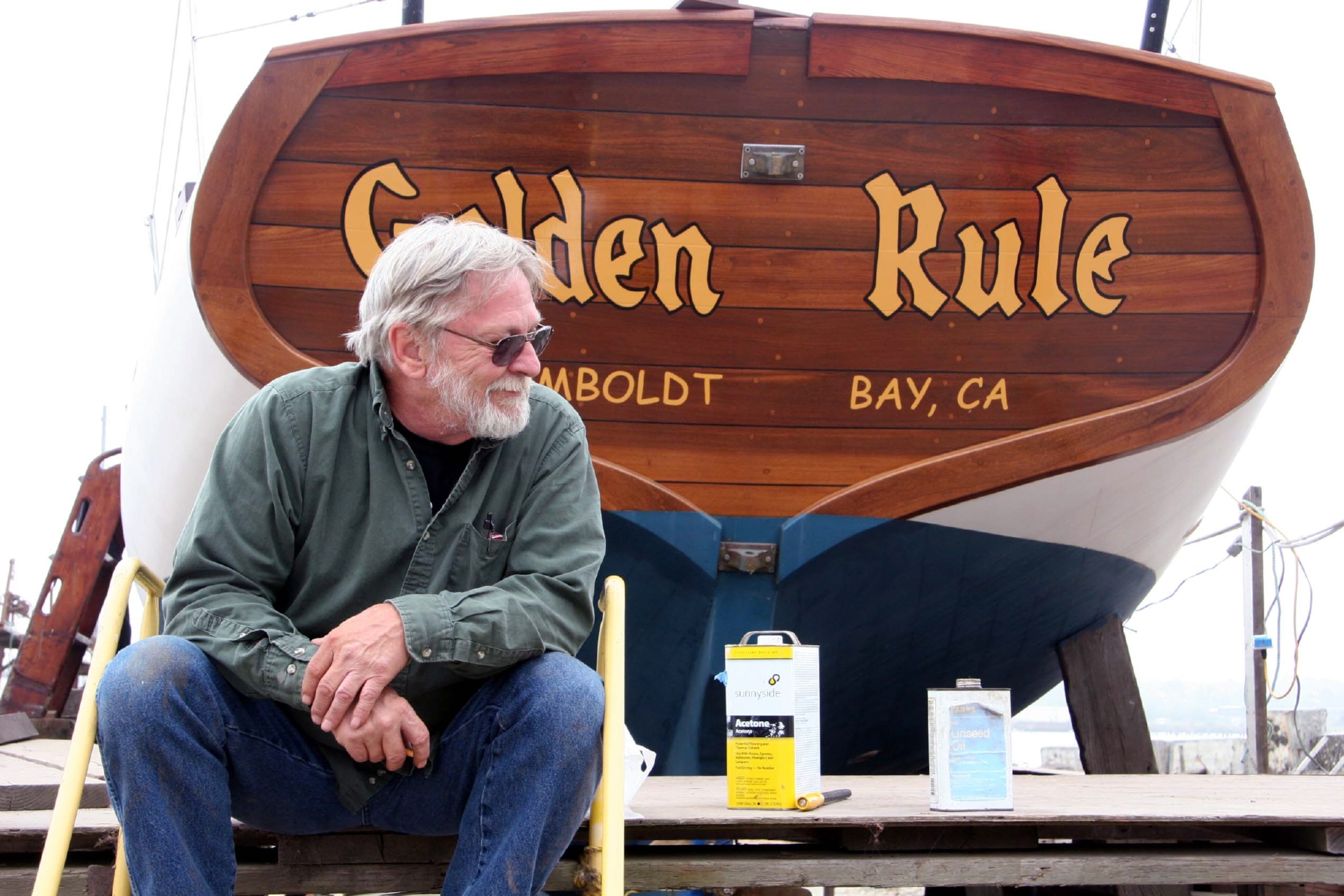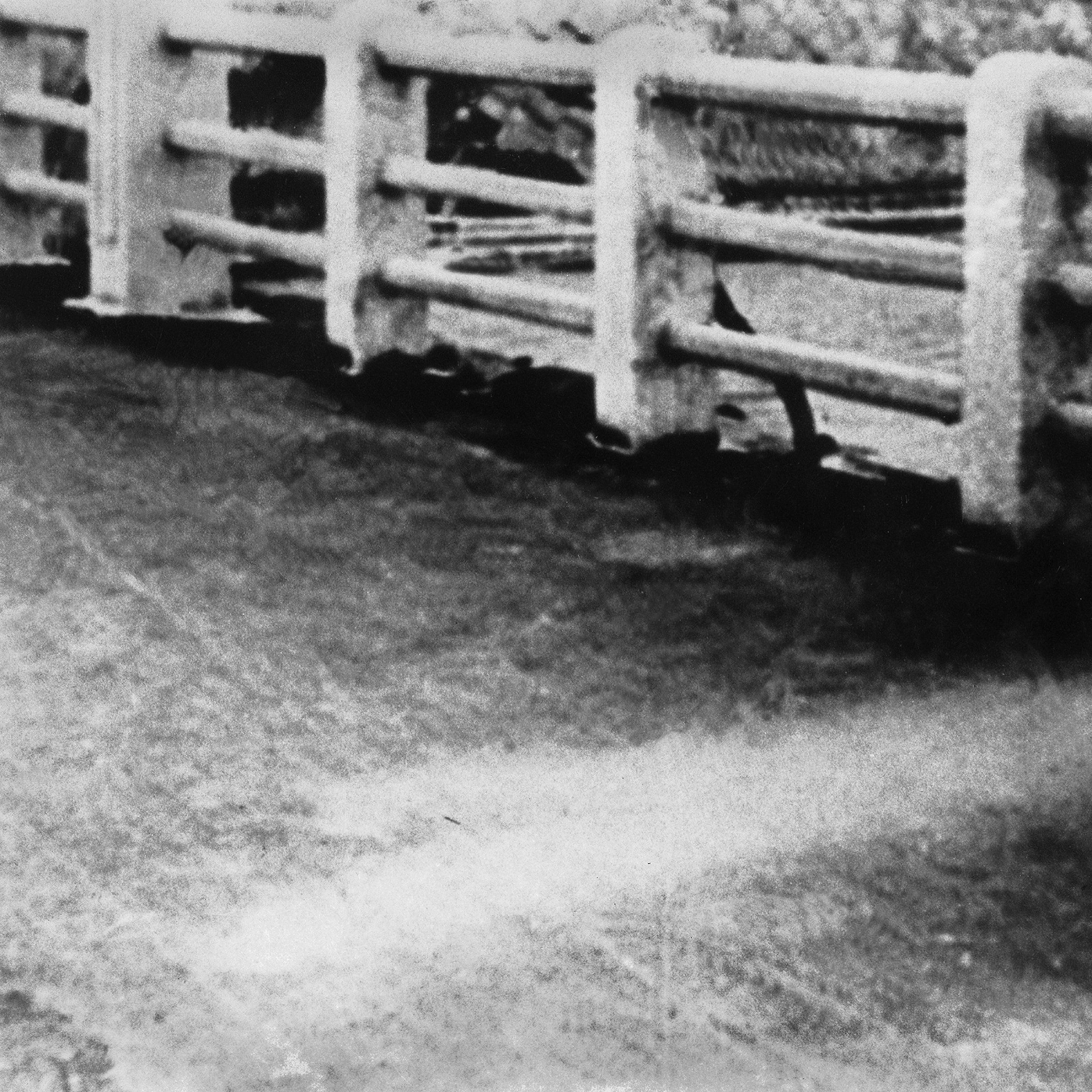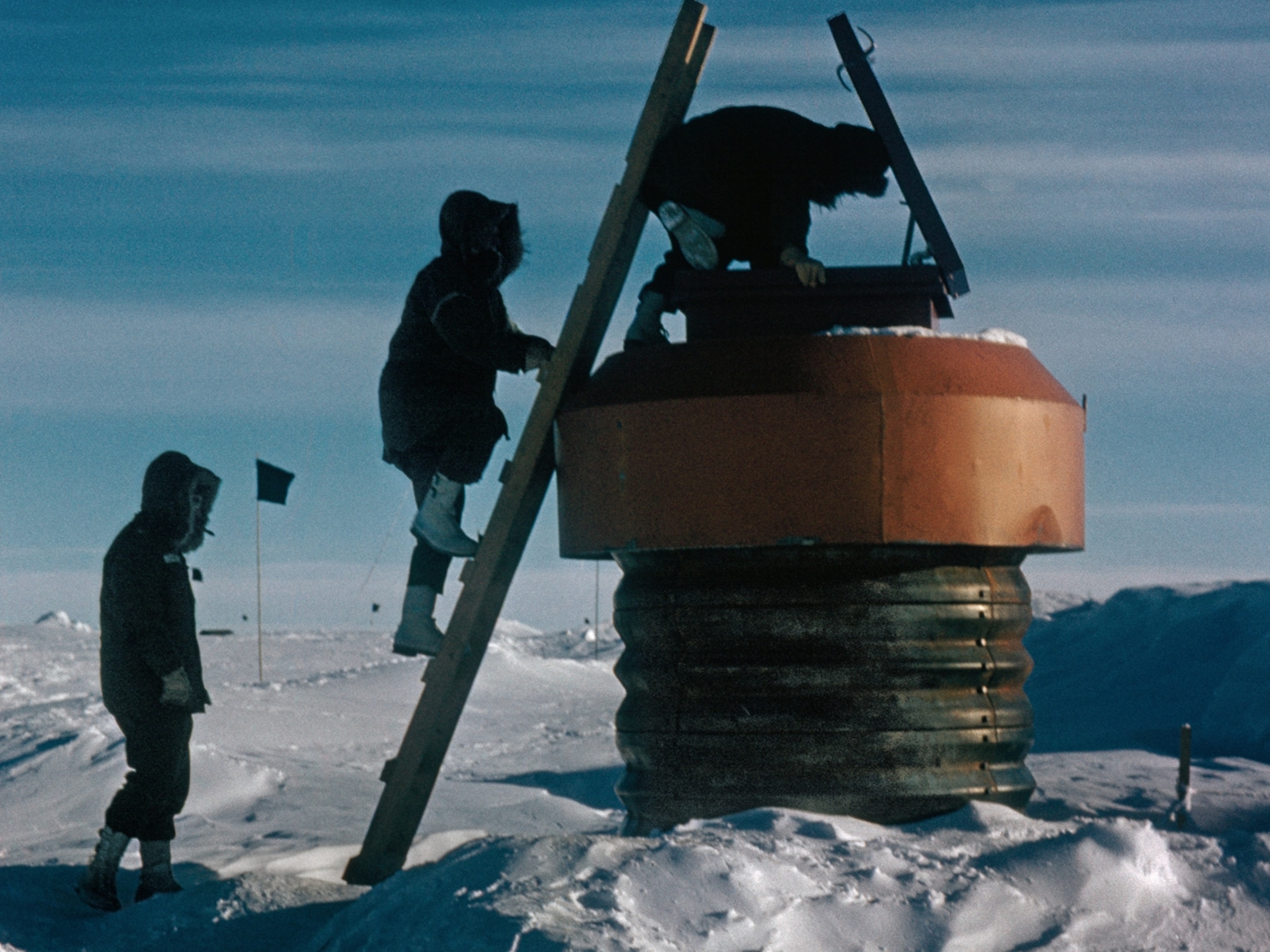
Restored Anti-Nuke Sailboat Launches Again on a Peace Mission
The Golden Rule drew attention to U.S. atmospheric nuclear tests in the Pacific in 1958 and helped start a movement that led to a ban.
EUREKA, California — Chuck DeWitt leaned one shoulder against a slender board, struggling to hold it in place while he screwed it into the top edge of the hull of the Golden Rule. “Nothing’s square,” he muttered. “That's the nature of wooden boats.”
DeWitt, 70, was working against time on a project to reconstruct history. Five years after he and a crew of fellow Vietnam War veterans began restoring the 30-foot (9-meter) ketch, the launch of the Golden Rule was days away. With wind billowing his white hair, the creases in DeWitt's sunburned brow seemed to deepen with each set of his shoulder as he strained to secure the board.
The project is more than a restoration for DeWitt, and the boat is no ordinary one. In 1958 a crew of pacifists tried to sail the Golden Rule to the Marshall Islands to protest atmospheric testing of nuclear bombs. The voyage was halted by the U.S. Coast Guard and the captain, Albert Bigelow, a Quaker and former U.S. Navy lieutenant commander, was thrown in jail.
The international publicity this confrontation attracted helped spur the growing opposition to nuclear tests and the arms race. It also initiated a tradition of protest boats carried on most notably by Greenpeace.
This boat changed the world in 1958. It can be done again.Chuck DeWitt, Vietnam War veteran
On Saturday, the Golden Rule is set to embark again. Christened by a Hiroshima survivor, it will launch into the waters of California’s Humboldt Bay to resume its mission as a peace boat. For DeWitt, who calls the Golden Rule "a weapon of mass education," it is a renewed commitment to raising public awareness of the dangers of radiation.
When he and other veterans first confronted the Golden Rule it had moldered in obscurity for years, some of them under water. A hole gaped in the hull, its ribs were broken and both masts were missing.
More resurrection than restoration, the boat now resembles the jaunty vessel that Bigelow sailed from Los Angeles to Honolulu and on toward the atomic test area. Outfitted with a new main mast and mizzenmast, it also boasts sophisticated electronic navigation equipment that hadn’t been invented in 1958, said Steve Neinhaus, 64, who installed it. An experienced sailor and veteran peace activist who will skipper the crew, he was wrestling with a bilge pump and missing parts. That was the least of the challenges of sailing the Golden Rule, which Neinhaus called “a personal requirement for me.”
The Golden Rule project is an improbable accomplishment by unlikely volunteers. Members of Veterans For Peace, they are a motley bunch that might have appalled the original crew, all conscientious Quakers. They smoke, drink and swear like the sailors, though most of them are not. Aging and perpetually strapped for money, the mostly retired men sought to banish their war-related demons as they ripped out rotten wood and replaced it plank by purpleheart plank.
Among them are a school administrator, letter carrier, civil engineer, physician's assistant and beekeeper. They share an opposition to war and nuclear weapons shaped by their military service. After years of post-war cynicism, restoring this historic vessel offered the promise of something positive, said DeWitt, the project coordinator. With a checkered youth that exposed him to the inside of a county jail, he embraced the restoration as an opportunity “to straighten out my karma before I kick the bucket.”
The Quakers who planned the Golden Rule’s 1958 voyage designed it as an act of civil disobedience to call attention to atmospheric nuclear weapons testing. In an open letter to President Eisenhower, Bigelow announced their intention to “sail, come what may.” And sail they did—right into the handcuffs of the Coast Guard.
Their arrests inspired Earle and Barbara Reynolds, who were en route in their own ketch Phoenix to Japan. Earle Reynolds, an anthropologist, had done extensive research for the U.S. government on the dangerous effects of radiation on Hiroshima’s children. The couple sailed into the test zone, and Earle was arrested.

The public demonstrations these direct actions provoked around the country caused a reluctant Eisenhower to suspend atomic tests in August 1958. Greenpeace's Rainbow Warrior and a fleet of other protest boats continued to rouse public outcry worldwide, contributing to the 1996 Comprehensive Test Ban Treaty.
At about the same time, the Golden Rule fell into the hands of Laurence Badgley, a doctor who traveled with the Rolling Stones in the early 1970s and is known to a generation of fans as Dr. Feelgood. How the boat ended up moored in Humboldt Bay is a mystery to Leroy Zerlang, a fifth-generation Eureka boatyard owner. But when it sank and Badgley asked him to raise it, he did.
When it sank a second time in March 2010, a disgusted Zerlang hauled the dilapidated ruins onto the beach of his boatyard. “I planned to get drunk and burn the SOB,” he said. A bear of a man whose falsetto bellows can out-compete the roar of his forklift, he admits a weakness for wooden boats. Even wrecked, the graceful lines and rakish charm of the Golden Rule beguiled him.
Zerlang became more intrigued as he researched its history. Any 30-foot craft that plies Pacific waters is impressive to begin with and the Golden Rule's message about nuclear weapons resonated with Zerlang. “I’m not a pacifist but anyone in their right mind is anti-nuke. This boat—she’s a sweetheart," he said.
Word of Zerlang's research spread to local members of Veterans For Peace, a global organization dedicated to promoting awareness of the true costs of war. Jim Sorter, a 1960s Vietnam veteran, showed up when the boat was “still wet from the bay.” He was as smitten as Zerlang and envisioned what the ketch might accomplish.
Sorter brought in DeWitt. After working with nuclear-armed torpedoes in the 1960s, DeWitt became a pacifist—"not Gandhian" but committed enough to stand in a street-corner vigil every Friday night. By October 2010 the vets had hatched their plan for a restoration of the ketch and its anti-nuke mission.
I’m not a pacifist but anyone in their right mind is anti-nuke.Leroy Zerlang, Boatyard owner
Zerlang offered his boatyard and electricity for a year, which stretched to five. Most of the work was done in a slow-paced percussion of hammers and power drills resonating through the coastal fog, accompanied by the screech of gulls and bleats of Zerlang's pet goats.
Progress came in pulses stimulated by donations, which eventually totaled $200,000. When a check for $1,500 arrived (“And you could count those on one hand," said Nate Lomba, a former treasurer.), DeWitt would buy supplies. When money ran out, he’d take a break in Baja California to volunteer on a leatherback turtle project.
A disagreement over money and ownership stopped work for several months, threatening to scuttle the entire enterprise. Nine of ten boat restorations fail, Zerlang noted. "This little boat's spirit pulled it through," he said.
Despite five years to plan, just what the crew will do remains vague. The possibilities range from educating children about the dangers of nuclear weapons and nuclear energy to sailing uninvited in Fleet Week and other shows of military prowess. Another option is monitoring radionuclides in ocean water.
The Golden Rule is scheduled to set sail on its first voyage on July 16, the 70th anniversary of the first detonation of a nuclear weapon. Its destination is San Diego, where it will be part of the national convention of Veterans For Peace in August. Zerlang will be watching with a father’s anxiety about his daughter. “I take care of boats. That’s what I do, so yes, the worry is there,” he said.
DeWitt will also be watching, charting the course of the Golden Rule's “positive propaganda.” “This boat changed the world in 1958. It can be done again," he said.
Follow Jane Braxton Little on Twitter.







